Note
Who tailors Hannibal's suits? I know some are Tom Ford and the casual blazer was Burberry but I don't know much else, can you help?
I'm afraid I have no knowledge of this. weartherude has some information on Hannibal's clothes and possessions here, but other than that, I can't help you. Sorry!
12 notes
·
View notes
Photo


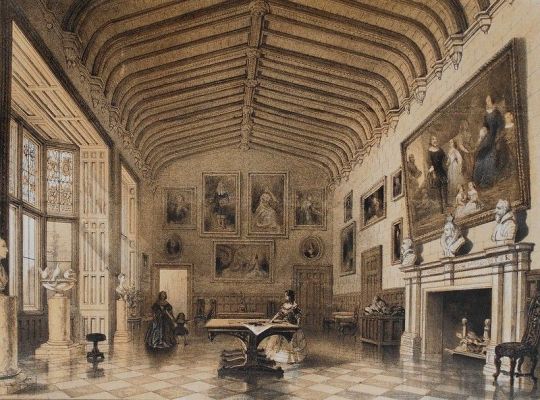
This painting in Hannibal’s kitchen is an 1858 lithotint by F.W. Hulme taken of an original sketch of Charlecote Park Great Hall by J.G. Jackson published by Chapman & Hall in September, 1845.
Charlecote Park is a grand 16th century country house, surrounded by its own deer park, on the banks of the River Avon near Wellesbourne, about 4 miles (6 km) east of Stratford-upon-Avon and 5.5 miles (9 km) south of Warwick, Warwickshire, England. It has been administered by the National Trust since 1946 and is open to the public. William Shakespeare has been alleged to have poached rabbits and deer in the park as a young man and been brought before magistrates as a result.
Frederick William Hulme (1816-1884) was an English landscape painter and illustrator born in Swinton in Yorkshire. The artist’s mother was a porcelain painter who inspired and taught her son his first lessons in art. Hulme is well know for illustrating a number of books including the works of Edgar Allan Poe as well as S. C. Hall, (Hulme was one of three primary artists used in our listed series of prints). Hulme was primarily know for his landscape paints of Surrey and Wales among other areas, their brightness and precision quite favorably received.
Oh yes, I can definitely picture Hannibal striding the halls of these magnificent house and adding the depiction to his Memory Palace ;).
Sending love to xshiromorix who identified this piece of art. :)
—-
All descriptions of paintings in Hannibal are here.
117 notes
·
View notes
Photo




This painting in Hannibal’s kitchen is the depictation of the famous sculpture Boy With Thorn. Most info from wiki:
Boy with Thorn, also called Fedele (Fedelino) or Spinario, is a Greco-Roman Hellenistic bronze sculpture of a boy withdrawing a thorn from the sole of his foot, now in the Palazzo dei Conservatori, Rome (Damn! I didn’t visited this museum when I visited Rome). A Roman marble of this subject from the Medici collections is in a corridor of the Uffizi Gallery, Florence (I visited the Uffizi Gallery, when I visited Florence, but honestly don’t remember it, obviously I have to visit it again! :)).
The sculpture has many bronze and marble copies. The Medici Roman marble seems to have been among the collection of antiquities assembled in the gardens at San Marco, Florence, which were the resort of the humanists in the circle of Lorenzo il Magnifico, who opened his collection to young artists to study from. The young Michelangelo profited from this early exposure to antique sculpture, and it has been discussed whether Masaccio was influenced by the Medici Spinario or by the bronze he saw in Rome in the 1420s, but Filippo Brunelleschi more certainly adapted the Spinario’s pose for the left-hand attendant in the bronze competition panel, The Sacrifice of Isaac 1401, his trial piece for the doors of the Baptistery of San Giovanni.
The formerly popular title Il Fedele (“The faithful boy”) derived from an anecdote invented to give this intimate and naturalistic study a more heroic civic setting: the faithful messenger, a mere shepherd boy, had delivered his message to the Roman Senate first, only then stopping to remove a painful thorn from his foot: the Roman Senate commemorated the event. Such a story was already deflated in Paolo Alessandro Maffei’s Raccolta di statue antiche e moderni… of 1704.
As we know, Hannibal loves Florence and Italy, so I think it’s very probable that this piece of art has a fine place in his Memory Palace and it’s obviously so favorite that he (in all likelihood) painted it and put it in his kitchen.
Thanks to Tomáš Kolich for identifying this piece of art! :)
—-
All descriptions of paintings in Hannibal are here.
109 notes
·
View notes
Photo


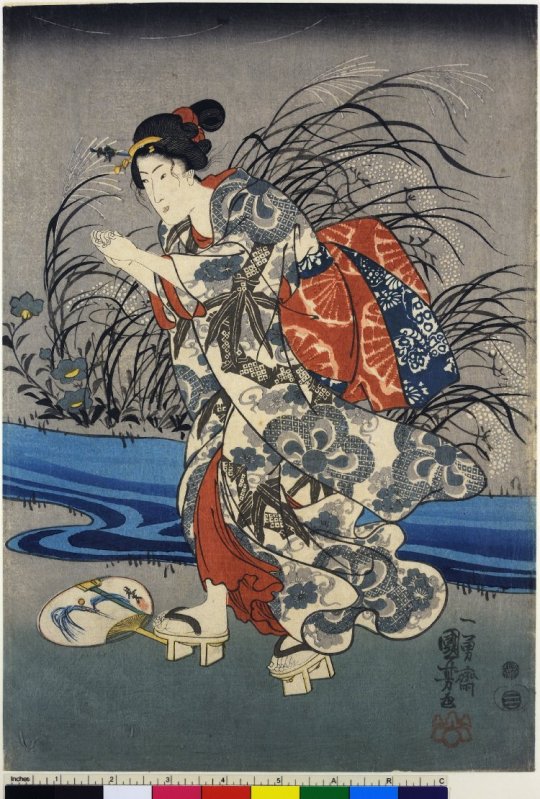
This painting in the Hannibal’s waiting room is part of a triptych called “Suzumi no hotaru” (納涼の蛍 - “Catching fireflies in the cool of the evening”).
The triptych is part of a larger collection called “Shiki no yuukan” (四季遊観 - “Pleasures of the Four Seasons”) by Utagawa Kuniyoshi and it dates from around 1843. Here you can see his many other art pieces.
Utagawa Kuniyoshi (歌川 国芳?, January 1, 1797[1] – April 14, 1861) was one of the last great masters of the Japanese ukiyo-e style of woodblock prints and painting. He was a member of the Utagawa school.
The range of Kuniyoshi’s subjects included many genres: landscapes, beautiful women, Kabuki actors, cats, and mythical animals. He is known for depictions of the battles of legendary samurai heroes. His artwork incorporated aspects of Western representation in landscape painting and caricature. (wiki)
This piece of art was not recognized by me, but by xshiromorix who send me the info. Sending hi and thanks for all us loving art in Hannibal! :)
239 notes
·
View notes
Photo

Cérès/Coq napoléon; a 1904 version was used in this week’s Hannibal. as a symbolic stand in for the typical Kharon’s obol. On the face: Cérès, the Roman goddess of the harvest and renewal, in Greek she is Demeter. On the back: LIBERTE EGALITE FRATERNITE and the Gallic rooster.
An obol of Demeter existed prior to the occurrence of the more famous obol used to pay the cost of Kharon carrying a shade across the river Akheron. It was the price paid by an initiate of the Eleusinian Mysteries, the initiate trading money for knowledge. Kharon himself is a later addition to the Greek pantheon, with texts and fragments about him dating back to the fifth century BCE. Later Roman tradition had the deceased carrying two coins for the ferryman of Akheron. He does not ferry the shades directly to the gates of Aides, but brings them before the three judges of the underworld, one of whom is Minos.
The napoléon was a replacement for the louis. Both coins were gold and weighed the same amount, it was merely due to regime changes that the name of the coin changed, louis remaining as a hold-out amongst the royalists.
With such a coin, presented as it is by Bella as a payment for her death, the symbolism doesn’t stop on the level of Kharon and his payment. The coin itself is life and death divided: Cérès as life, as the flowering fields, the growing grain, and agriculture. Mother of Proserpina (Persephone), the dread queen of the underworld, Cérès is literally one half of a duality embracing life and death.
Hannibal Lecter is not your willing Kharon. He does not want your shade freely given. He is not gentle death, a barge poled down a stream. He is the Dionysiac sparagmos, the rending of a body to be eaten. The divinity of madness unbound.
781 notes
·
View notes
Photo




In one area she was at least his equal. Automobiles. Starling was a car buff, as anyone who saw her car could tell.
Dr Lecter had owned a supercharged Bentley before his disgrace. Supercharged, not turbocharged. Custom supercharged with a Rootes-type positive displacement blower, so it had no turbo lag.
646 notes
·
View notes
Photo

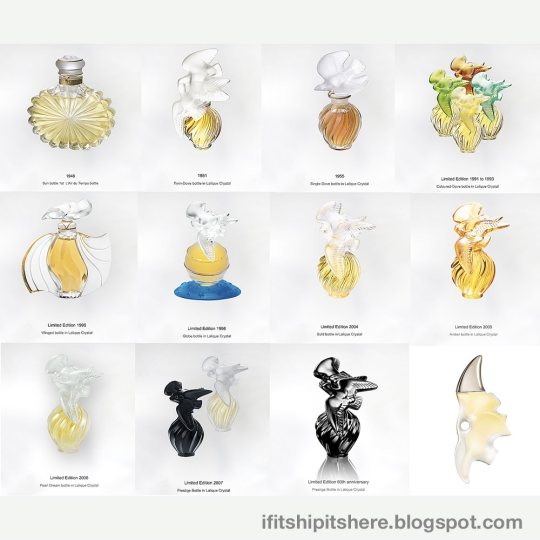
L'Air du Temps
Nina Ricci
Created 1948
You use Evyan skin cream, and sometimes you wear L'Air du Temps, but not today. Today you are determinedly unperfumed.
(The Silence of the Lambs, Thomas Harris)
26 notes
·
View notes
Photo

The Flaying of Marsyas
Titian, c.1575
Oil on canvas, 212 x 217 (83 x 81in)
"Clarice, recreational flayings are always conducted with the victim inverted, so that blood pressure is maintained longer in the head and chest and the subject remains conscious. Didn't you know that?"
"No."
"When you're back in Washington, go to the National Gallery and look at Titian's Flaying of Marsyas before they send it back to Czechoslovakia. Wonderful for details, Titian - look at helpful Pan, bringing the bucket of water."
(The Silence of the Lambs, Thomas Harris)
Read more about this piece here:
Great Works: The Flaying of Marsyas by Michael Glover for the Independent
Wikipedia page
24 notes
·
View notes
Photo


Morel mushrooms
Hannibal smiled at him and untied the bundle of his own handkerchief. It was full of mushrooms.
"Morels are one hundred francs a centigram in Paris, and these were growing on a stump!"
-
Dortlich's cheeks were missing, excised cleanly, and his teeth were visible at the sides. His mouth was held open by his dog tag, wedged between his teeth...
"A brochette, cheeks and morels," he said.
(Hannibal Rising, Thomas Harris)
Slow cooked beef cheeks with morels
Morels and monk cheeks on toast
Chicken and mushroom brochettes
25 notes
·
View notes
Photo


Fiddleheads
Lady Murasaki did not see any fiddleheads on display, and before she had the chance to ask, Bulot of the Vegetables brought a basket of the coiled ferns from under his counter. "Madame, these are so superlative I would not allow the sun to touch them. Awaiting your arrival, I covered them with this cloth, dampened not with water, but with actual garden dew."
(Hannibal Rising, Thomas Harris)
Recipes for fiddleheads here (Saveur.com)
Fiddlehead Ferns and Angel Hair Pasta
Sauteed Fiddlehead Ferns
28 notes
·
View notes
Photo

Maestà
Cimbaue (1280-1285)
Uffizi Gallery, Florence
Cimabue is generally regarded as one of the first great Italian painters to break away from the Italo-Byzantine style, although he still relied on Byzantine models. The art of this period comprised scenes and forms that appeared relatively flat and highly stylized. Cimabue was a pioneer in the move towards naturalism, as his figures were depicted with rather more lifelike proportions and shading. Even though he was a pioneer in that move, his Maestà paintings show Medieval techniques and characteristics.
In Canto XI of his Purgatorio, Dante laments Cimabue's quick loss of public interest in the face of Giotto's revolution in art:
O vanity of human powers,
how briefly lasts the crowning green of glory,
unless an age of darkness follows!
In painting Cimabue thought he held the field
but now it's Giotto has the cry,
so that the other's fame is dimmed. [x]
-
"DEATH ANGEL: CLARICE STARLING, THE FBI'S KILLING MACHINE," screamed the National Tattler's headline in seventy-two-point Railroad Gothic. The three front-page photos were: Clarice Starling in fatigues firing a .45-caliber pistol in competition, Evelda Drumgo bent over her baby in the road, her head tilted like that of a Cimbaue Madonna, with the brains blown out, and Starling again, putting a brown naked baby on a white cutting board amid knives and fish guts and the head of a shark.
(Hannibal, Thomas Harris)
6 notes
·
View notes
Photo
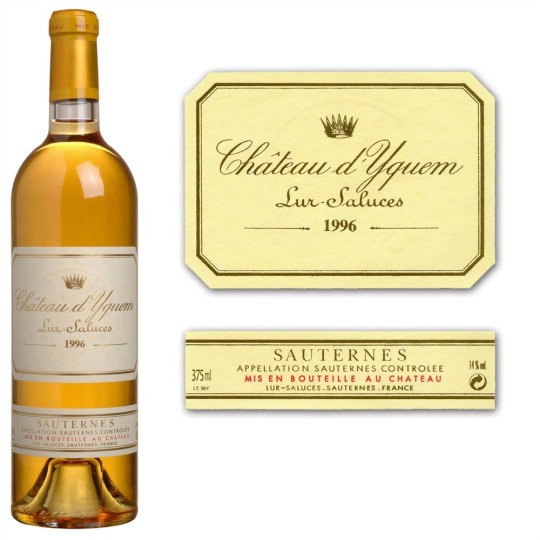


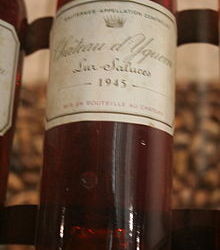
Château d'Yquem
Château d'Yquem is often described as the greatest sweet wine in the world. After centuries of family ownership, Yquem was finally sold in acrimonious circumstances to Louis Vuitton-Moët-Hennessy in 1999. However, its former owner and director Alexandre de Lur-Saluce remains in charge.
Yquem is located on the highest hill inSauternesand enjoys the best growing conditions in the whole appellation. The 110-hectare vineyard is planted with 80% Sémillon and 20% Sauvignon Blanc. Only fully botrytized fruit is picked by the 150 highly skilled pickers and yields are so low that each vine produces only one glass of wine.
Yquem is fermented in oak barrels (100% new) and is left in barriques to mature for up to 36 months. Intensely opulent when young, Yquem develops an extraordinary complexity and exotic richness when fully mature, with the best vintages lasting for over 50 years. Château d'Yquem is classified as a 1er Cry Classé supérieur. [x]
Wines from Château d'Yquem are characterised by their complexity, concentration and sweetness. A relatively high acidity helps to balance the wine's sweetness. Another characteristic for which Château d'Yquem wines are known is their longevity. With proper care, a bottle will keep for a century or more. During this time, the fruity overtones will gradually fade and integrate with more complex secondary and tertiary flavours. [x]
Visit the official d'Yquem site
When Starling checked her other tires, she saw the package on the ground beneath her car.
A three-hundred-dollar bottle of Château d'Yquem, and the note, written in that familiar hand: Happy Birthday, Clarice.
(Hannibal, Thomas Harris)
31 notes
·
View notes
Photo

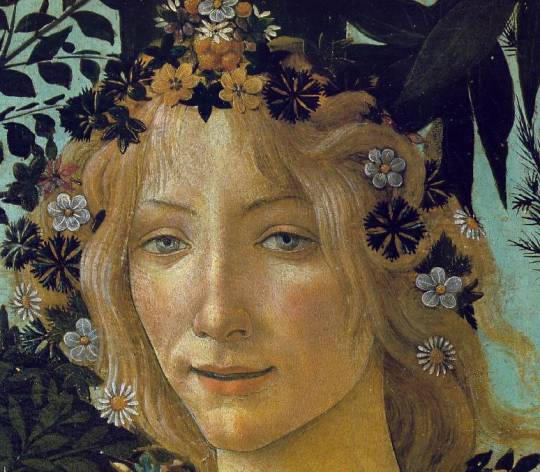


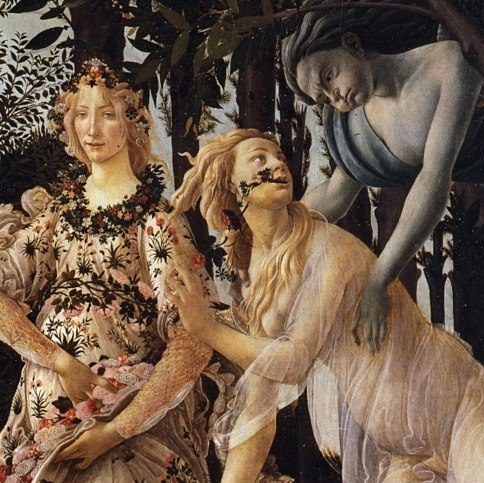
Primavera
c.1482
Sandro Botticelli
Tempera on panel, 202 x 314 (80 x 124in)
Uffizi Gallery, Florence
The painting is described in Culture & Values (2009) as "[o]ne of the most popular paintings in Western art". It is also, according to Botticelli, Primavera (1998), "one of the most written about, and most controversial paintings in the world."
While most critics agree that the painting, depicting a group of mythological figures in a garden, is allegorical for the lush growth of Spring, other meanings have also been explored. Among them, the work is sometimes cited as illustrating the ideal of Neoplatonic love. The painting itself carries no title and was first called La Primavera by the art historian Giorgio Vasari who saw it at Villa Castello just outside Florence, in 1550. [x]
There it was... the garlanded nymph on the right, her left breast exposed, flowers streaming from her mouth as the pale Zephyrus reached for her from the forest.
There. The image of the couple dead in the bed of the pickup, garlanded with flowers, flowers in the girl's mouth. Match. Match.
(Hannibal, Thomas Harris)
43 notes
·
View notes
Note
Love the work you have been doing until now do not stop ! really good! (Pardon, english its not my language)
Thank you! I'll be hoping to put up new stuff every day!
2 notes
·
View notes
Text
Attention fans of Dr Hannibal Lecter!

Hannibal’s House is a new blog containing a growing catalogue of the tastes of Dr Lecter himself, and occasionally the tastes of other characters too.
I am writing my dissertation on Hannibal Lecter and thought you might be interested in some of the things I am researching. All content on the blog will be taken from the novels, and all items will be blogged with quotes from or references to the text. You will be able to search through the collection via tags of the novels, themes, characters etc.
As it’s my final year I will be very busy, so the blog will take time to grow, so please be patient.
#hannibal#the silence of the lambs#silence of the lambs#hannibal lecter#dr hannibal lecter#red dragon
11 notes
·
View notes
Photo




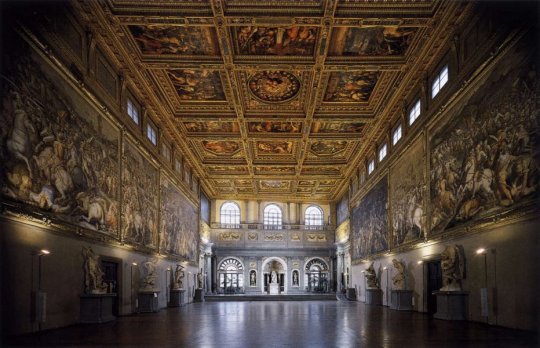


Palazzo Vecchio
The Palazzo Vecchio rising from the dark piazza, floodlit, intensely medieval with its arched windows and battlements like jack-o'-lantern teeth, bell tower soaring into the black sky.
(Hannibal, Thomas Harris)
The Palazzo Vecchio is the town hall of Florence. Built in 1299, it is one of the most significant public places in Italy.Although most of the Palazzo Vecchio is now a museum, it remains the symbol of local government: since 1872 it has housed the office of the mayor of Florence, and it is the seat of the City Council.
Official museum page
Wikipedia page
The Pazzi conspiracy in the novel Hannibal by Thomas Harris was a real event. Salviati and Francesco Pazzi plotted the murder of Lorenzo and Giuliano de' Medici.On Sunday, 26 April 1478, during High Mass at the Duomo before a crowd of 10,000, the Medici brothers were assaulted. Giuliano de' Medici was stabbed 19 times by Bernardo Bandi and Francesco de' Pazzi. As he bled to death on the cathedral floor, his brother Lorenzo escaped with serious, but non life-threatening wounds. Salviati Pazzi was later punished and hanged on the walls of the Palazzo Vecchio. [x]
1479 drawing by Leonardo da Vinci of hanged Pazzi conspirator Bernardo di Bandino Baroncelli
82 notes
·
View notes
Photo


Judith and Holofernes
Donatello, 1460
Bronze sculpture (236cm/93in)
Location: Palazzo Vecchio, Florence
More information
Dr Fell Stood very still beside the great bronze statue of Judith and Holofernes, giving his back to the speaker and the crowd. He spoke without turning around and it was hard to know which figure the voice came from- Judith, her sword forever raised to strike the drunken king, or Holofernes, gripped by the hair, or Dr Fell, slender and still beside Donatello's bronze figures.
(Hannibal, Thomas Harris)
7 notes
·
View notes